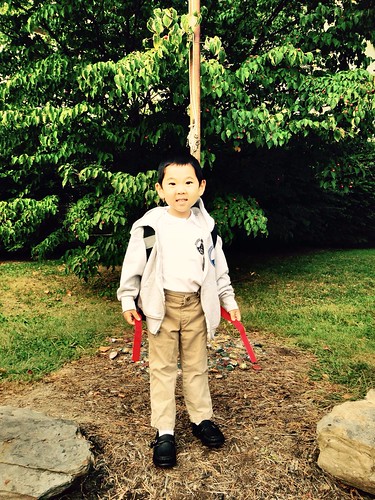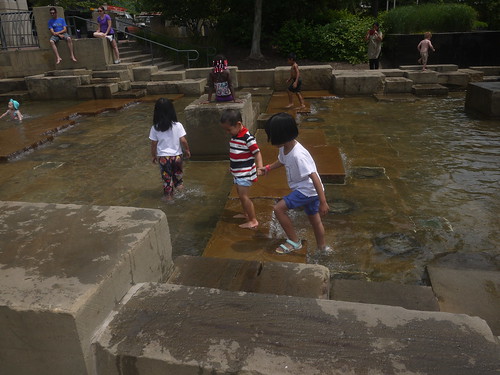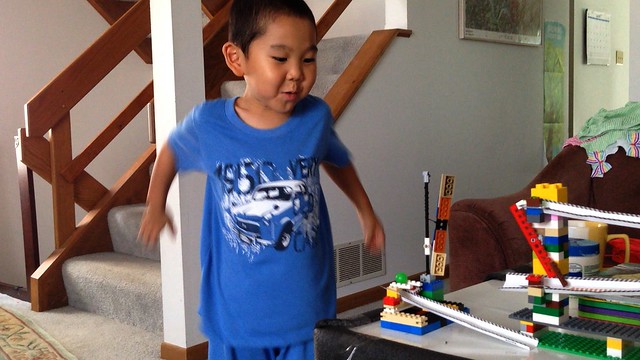For the two weeks before pre-K, we have been moving his bedtime and wake up time up. From a generally 9:30 in-bed time we shifted to 8:30. From a generally 8AM wakeup over the summer we shifted him to 7. The week of pre-K we had him in bed by 8:30, and 6:30 wake up. Sunday was the school welcome and orientation. Monday I woke him up in the morning to get to school to play in their playground. Wednesday was first day of school. Yeah!
 |
| First day of Kindergarten |
Main development for the past month:
We had a nearby neighbor from China that we got to know over the summer, which included two young girls. T and them played nearly daily as we were essentially the only people they knew who were not business related (and the only people for the kids to play with). They eventually did so many things with us that we joked that they were copying our lives.
 |
| Playing on the Northshore Riverwalk Water Steps |
T had another round of testing, so now he has a Yellow belt with Black Strip (in the ATA system, the Yellow belt is the third belt, after White and Orange).
T has definitely been getting more confident and expressive over the summer. He is better about expressing what he wants and being forceful (i.e. taking his turn). And he is better about expressing when he has an opinion, which will hopefully help when in school. (Taekwondo definitely contributes here)
A has turned into a 15 month old babbling daredevil. She is a determined child when she has determined what she wants, and is willing to climb over anything to get to it. Very amusing are her babbling episodes, where she can go on babbling for extended periods of time. When she develops language skills she is going to talk our ears off.
Looking forward we see settling into his new school and getting to know his place in the class. We also have a first TKD tournament that T will go to in September, which is a new level of performing in public


